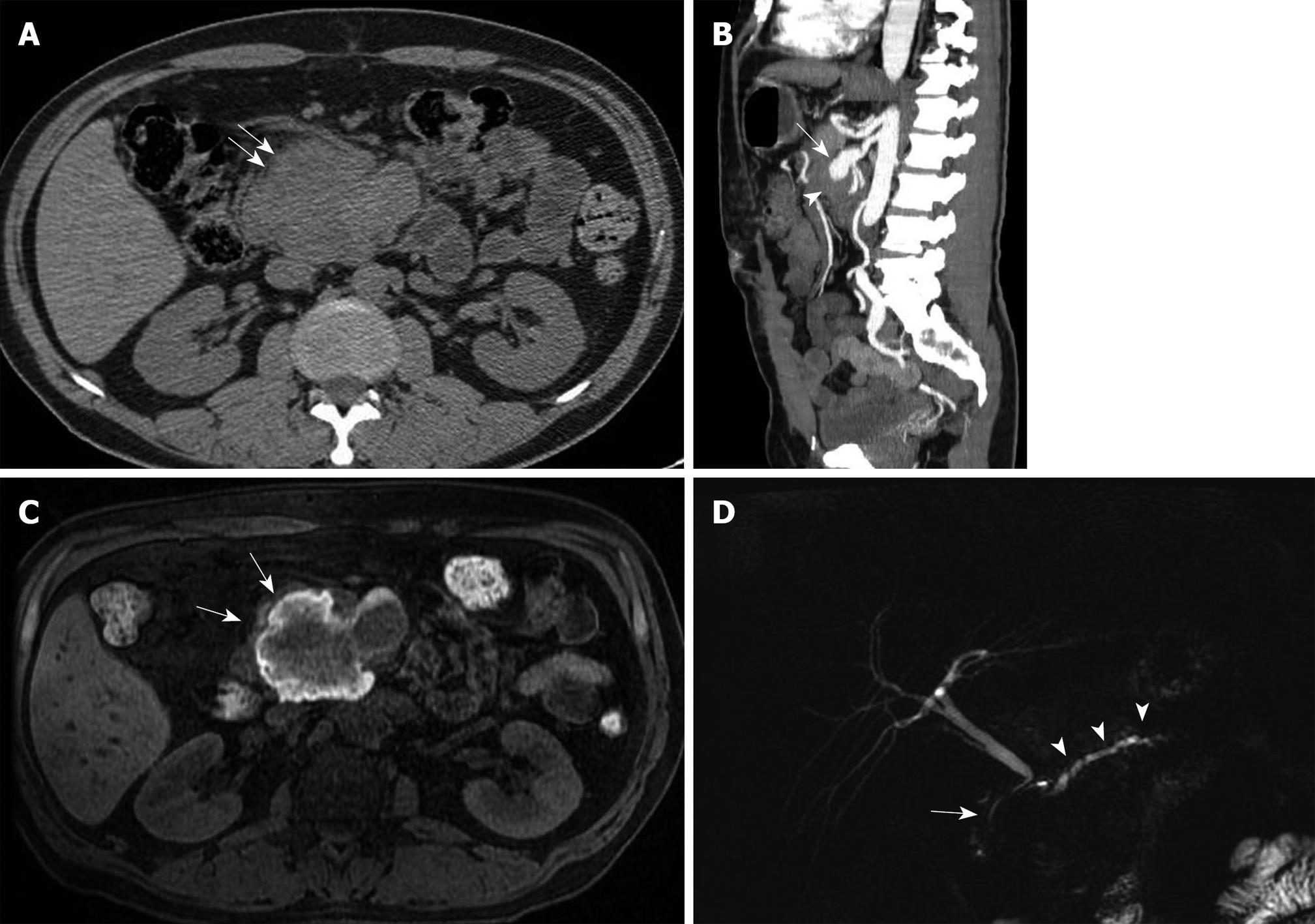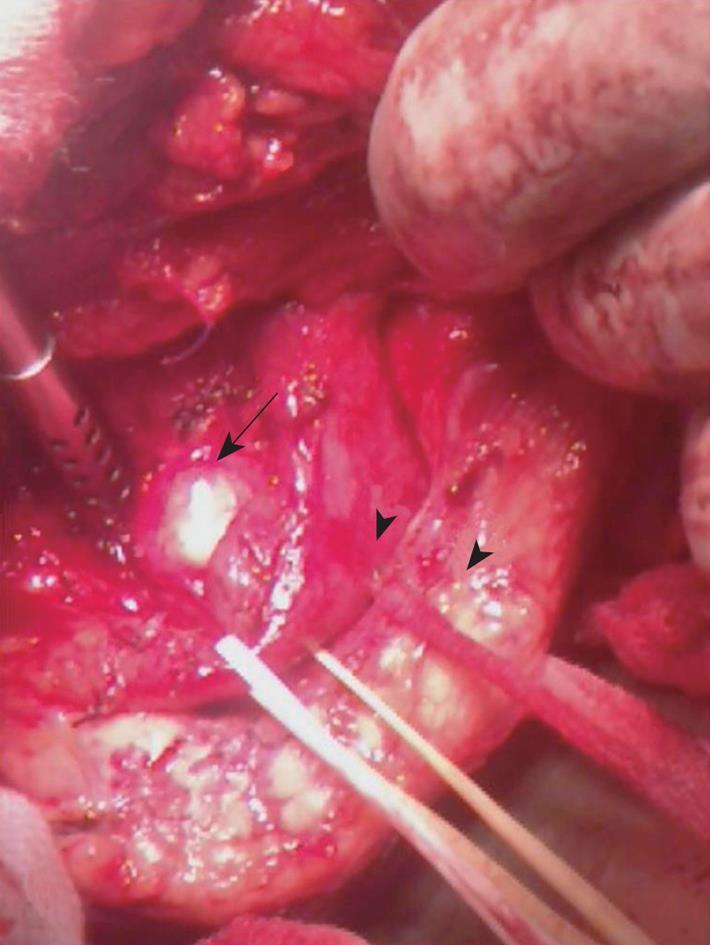Copyright
©2010 Baishideng.
World J Gastroenterol. May 14, 2010; 16(18): 2298-2301
Published online May 14, 2010. doi: 10.3748/wjg.v16.i18.2298
Published online May 14, 2010. doi: 10.3748/wjg.v16.i18.2298
Figure 1 Images of the patient.
A: Axial unenhanced multi-detector computed tomography (MDCT) shows a soft-tissue mass (arrows) in the area of the uncinate process of the pancreas. There is no sign of calcification or fluid level; B: Sagittal multiplanar reconstruction clearly shows the superior mesenteric artery (arrow) involved in a giant soft-tissue attenuated mass - the hematoma (arrowhead) - at the pancreatic level. After contrast administration, there was no significant enhancement in the hematoma, due to its thrombotic content; C: Magnetic resonance, axial unenhanced gradient echo T1-weighted imaging with fat suppression. The T1 hyperintense perilesional signal (arrows) was caused by the blood content; D: Magnetic resonance cholangiopancreatography (MRCP) shows dilatation of the main pancreatic duct (arrowheads); the choledochus (arrow) was compressed and dislocated, with mild narrowing of the lumen in the distal tract.
Figure 2 Surgical intervention.
Intervention confirmed an aneurysm of the superior mesenteric artery, which ruptured with hematoma in the head of the pancreas. The figure shows the aneurysm (arrow) and superior mesenteric artery and vein (arrowheads).
- Citation: Palmucci S, Mauro LA, Milone P, Di Stefano F, Scolaro A, Di Cataldo A, Ettorre GC. Diagnosis of ruptured superior mesenteric artery aneurysm mimicking a pancreatic mass. World J Gastroenterol 2010; 16(18): 2298-2301
- URL: https://www.wjgnet.com/1007-9327/full/v16/i18/2298.htm
- DOI: https://dx.doi.org/10.3748/wjg.v16.i18.2298










